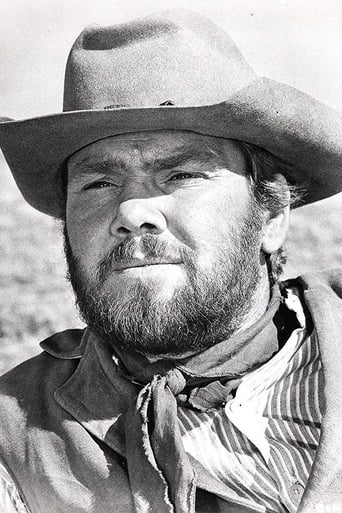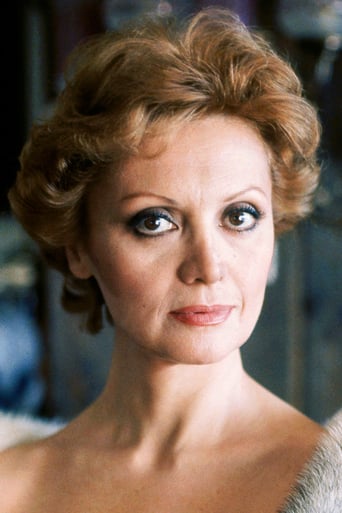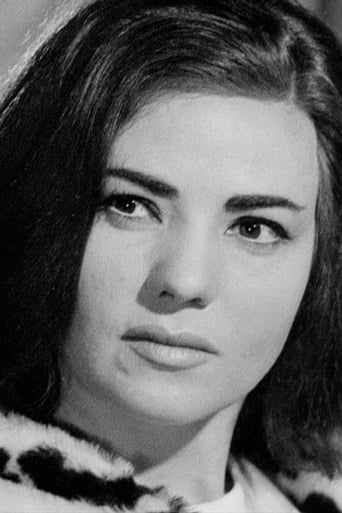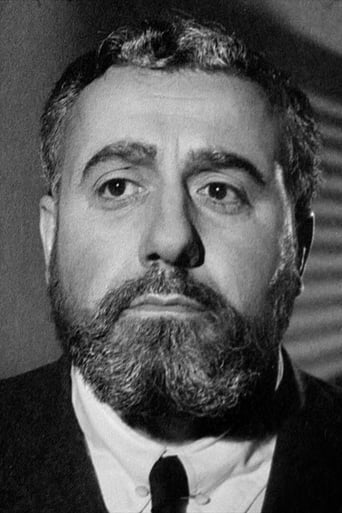Lancoor
A very feeble attempt at affirmatie action
Micah Lloyd
Excellent characters with emotional depth. My wife, daughter and granddaughter all enjoyed it...and me, too! Very good movie! You won't be disappointed.
Scotty Burke
It is interesting even when nothing much happens, which is for most of its 3-hour running time. Read full review
Scarlet
The film never slows down or bores, plunging from one harrowing sequence to the next.
gavin6942
A mad scientist creates a hideous monster to carry out his murderous plans.I watched this on Netflix streaming, so I have to say I do not think they had the best copy possible. At times it seemed like a poor digital transfer from an old source. This did not really hurt the movie, but I just want to say if you want to see this film in its best light, you may want to look elsewhere. (Though, for all I know, no good copy exists.) How this film ties together Orlof, Jekyll, an robots is a bit confusing, not helped in the least by the translation issue. I watched it as "Monster of Dr. Orlof", which seems to suggest a far different film than "The Mistresses of Dr. Jekyll", and yet they are one and the same.
MARIO GAUCI
The second "Orloff" movie is apparently unrelated to the first (a re-acquaintance with which will follow): in fact, this name is omnipresent throughout Franco's filmography; anyway, it is more or less on the same level of THE SADISTIC BARON VON KLAUS (1962) – even if I watched ORLOFF in English rather than French (or, for that matter, the original Spanish language). Again, Franco shows to be fairly adept with genre conventions and even manages to blend them relatively easily with a modern-day setting – still, he cannot help being himself and resist incorporating nightclub performances (in fact, this rather lazily makes the artistes themselves the victims so that we get a song every 20 minutes or so!) and, inevitably, erotic overtones.Incidentally, Howard Vernon (the actor most associated with the Orloff role) is sorely missed here – the character himself is only of secondary importance and appears very briefly – but the memorable Morpho figure, a disfigured zombie-like creature obeying its master's will (not unlike Cesare from the German Expressionist landmark THE CABINET OF DR. CALIGARI {1920}), is now assumed by Andros. The latter – played by Hugo Blanco, the villainous latest member of the Von Klaus family and whose brooding good looks suit his mute stalker here – is perversely turned into a monster (hence the title, though the print actually bears the absurd moniker DR. JEKYLL'S MISTRESSES - which would, in any case, have better suited Walerian Borowczyk's masterful 1981 film, DOCTEUR JEKYLL ET LES FEMMES!) by his own scientist brother (Vernon's bearded, rather gruff replacement and saddled with the peculiar surname of Fisherman) when he catches him in bed with his own wife (she, of course, also pays for her infidelity by being driven to the bottle).However, the plot this time around is decidedly contrived: we never learn why Andros (who sleeps upright in a class cage, as Cesare himself did albeit in a wooden-box) is sent on a murderous rampage – after being revived, and subsequently controlled, by sound-waves – every once in a while (most effectively when he nonchalantly moves through a crowded nightspot following yet another attack). The "Digitally Obsessed" website review suggests the reason for the various killings is because Fisherman wanted to get even with his spouse…but this is hardly EYES WIDE SHUT (1999), is it?! Similarly, the heroine – the monster's daughter, whom she believed was dead and buried (at one point, he even visits his own grave!) – turns up to stay with the central family only so that we get the obligatory damsel-in-distress and add an admittedly refreshing touch of pathos to Andros' condition; Agnes Spaak, sister of the more famous Catherine(!), appears in this part. On the other hand, the girl's bland male counterpart is extremely annoying, and the presence of the Police basically only serves to keep the audience abreast of the villains' eventual apprehension.
ferbs54
Although the 1964 Jess Franco offering "Dr. Orloff's Monster" is commonly thought of as a sequel to his classic film "The Awful Dr. Orloff," released two years earlier, it strikes this viewer as more of a remake than a continuation. Howard Vernon does not appear in "DOM" as Orloff, nor does his human-robot brother, Morpho. In the second film, Dr. Conrad Jekyll (the brother of Henry, perhaps?) learns how to turn his dead brother, Andros (who he had murdered for philandering with his wife, just as Orloff had done), into a human robot. He gleans this invaluable info from a dying scientist who looks a bit like Howard Vernon and who the viewer infers must be Orloff himself. Jekyll (played by Marcelo Arroita-Jauregui, an actor who makes his character as difficult to like as his own name is to pronounce!) then uses his brother-robot to do his dirty work; namely, slaying various women about town. In a scenario strikingly similar to the setup in the following year's Cybernauts episode of "The Avengers," he gives these women a necklace containing an ultrasonic device that Andros homes in on. ("The Avengers" substituted a pen.) But trouble looms for the bad doctor when his pretty niece, appealingly played by Agnes Spaak, drops by with her new beau for a Xmas visit.... Though plotwise very similar to the first Orloff outing, this "sequel" also has much in common with another Franco film that I recently saw, 1962's "The Sadistic Baron von Klaus." Both films take place in the fictitious Austrian town of Holfen, feature surprisingly imaginative direction by Franco as well as stunning B&W cinematography, center on the police investigation of the various homicides, showcase some truly outre music from Daniel White, utilize the same bizarre-looking castle, and, of course, star Hugo Blanco in the titular role. "DOM" ups the ante a bit by throwing in a few more musical numbers and more topless scenes, and also treats the viewer to such striking sequences as Jekyll's visit to an opium den and Andros' visit to the local cemetery. The picture as a whole looks terrific, is well acted and makes perfect sense, ultimately; what a difference between these early to mid-'60s Franco films and the rest of his humongous oeuvre (around 190 films, as of this date!)! Hard to believe that this artful piece of horror was done by the same man who later gave us "The Devil Came From Akasava"....
goblinhairedguy
If you've suffered through some of the hack work Jess Franco cranked out in the last two decades, you may find it difficult to believe that he once took some pride in his craft and evinced a certain mastery of cinematic technique, as well as a modicum of discipline. "Dr Orloff's Monster" is a case in point. Despite the title, it bears no direct relation to the creepy and perverse opus, "The Awful Dr Orloff", which put the director on the map back in the early 60s. However, it shares the same doom-laden aura -- with the expected (but always riveting) kinky asides -- that so resemble that earlier picture as well as the German Edgar Wallace 'krimi' series which was reaching its peak at the same time.The picture is rife with carefully-executed camera angles and atmospherics, something that would become anathema to Franco's slash-and-burn methods of the 80s. The best scenes are reminiscent of (dare I say) Lewton and Franju. It builds up a strong pathos for the title character, thanks to a subtle, wordless portrayal that evokes Cesar in 'Cabinet of Dr Caligari' and Christiane in 'Eyes without a Face' (such homages were a Franco specialty). There is a particularly poignant sequence in which the zombie stumbles about near his own tombstone in a bleak, wintry cemetery. No matter what depths Franco's movies plunged to, they always offered a few wonderfully oddball cabaret scenes in smoky jazz or rock bars, and this is no exception. One singer performs a wacky, rhythmic Latin ditty that must have sparked the imagination of the members of the retro band 'Les Rita Mitsouko'. (These cabaret scenes were a welcome staple of the Euro-thriller genre of the 60s, also perking up the krimi series, several of the campier works of the Italian Gothic revival, and especially the outlaw melodramas of Jose Benazeraf.)There are already foreshadowings of the director's latter-day carelessness -- a few too many zooms, cutting from the middle of one scene to another, and a general neglect of motivation. And, of course, he'd end up doing the revenge plot to death. But overall, this one (along with the much more perverse 'Sadistic Baron von Klaus') comes highly recommended for Franco skeptics and genre fans alike. Surprisingly, this film was immediately followed by his magnum opus, the delirious 'Succubus' (aka 'Necronomicon'), which in its pseudo-sophisticated Radley-Metzger-like style is miles removed from the Gothic horror of his early work.




